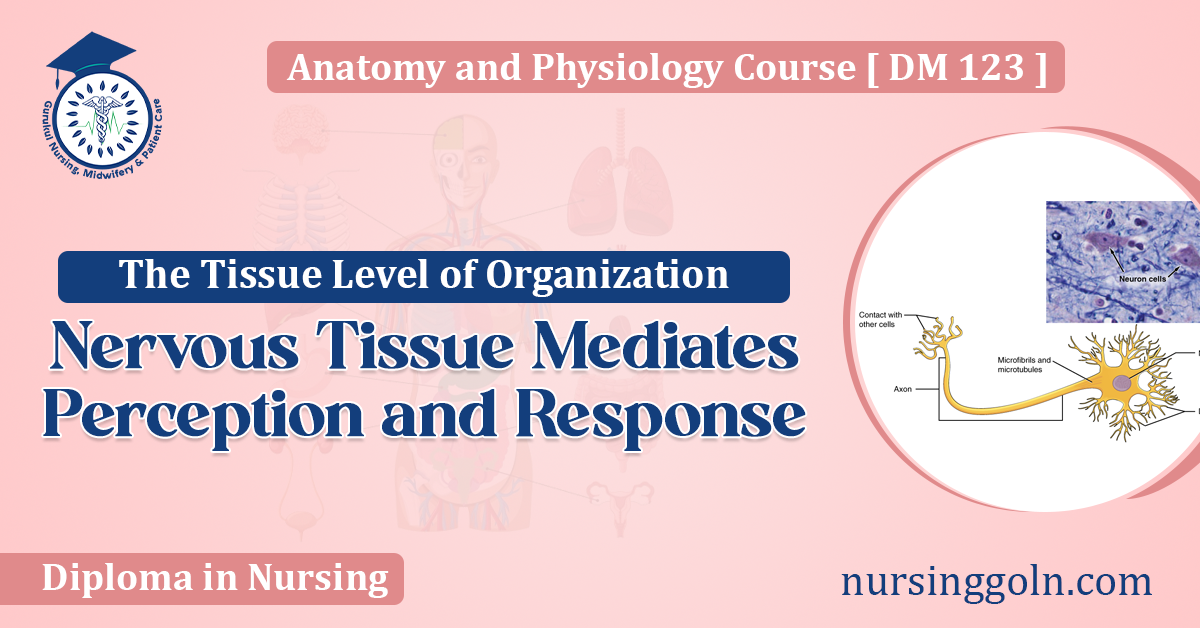When we think about the incredible complexity of the human body, one thing that often gets overlooked is the tissue level of organization, which plays a crucial role in mediating our perceptions and responses. Among the various types of tissues, the nervous tissue stands out due to its remarkable ability to process information, sense the environment, and generate coordinated responses. This article will delve deep into the intricacies of nervous tissue and explore how it forms the foundation of our perception and reactions.
Introduction to Tissues
Tissues are groups of similar cells that work together to perform a specific function. The human body is made up of four primary tissue types:
- Epithelial Tissue – Covers and lines body surfaces.
- Connective Tissue – Provides support and connects parts of the body.
- Muscular Tissue – Enables movement.
- Nervous Tissue – Mediates perception and response.
Among these, nervous tissue is unique in its capability to transmit electrical signals and play a role in both perception and response.
Components of Nervous Tissue
Nervous tissue is primarily made up of two cell types: neurons and neuroglial cells.
Neurons
Neurons, or nerve cells, are the functional units of the nervous system. Each neuron consists of:
- Cell Body (Soma): Contains the nucleus and most of the cell’s organelles.
- Dendrites: Short, branched extensions that receive signals from other neurons.
- Axon: A long, slender projection that transmits signals to other cells.
The signal transmission in neurons occurs through a process called an action potential, which is a rapid change in voltage across the cell membrane. This action potential travels along the axon to reach other neurons or effector cells.
Neuroglial Cells
While neurons play a starring role, neuroglial cells (or simply glial cells) are the supporting actors. They are far more numerous than neurons and serve a variety of crucial functions, including:
- Providing support and insulation.
- Protecting neurons from pathogens.
- Assisting in repair and maintenance.
- Facilitating nutrient supply.
The Role of Nervous Tissue in Perception
One of the most significant roles of nervous tissue is to perceive sensory information from our environment. This process is typically described in the following steps:
- Stimulus Detection: Specialized sensory receptors detect specific stimuli, such as light, sound, temperature, or pressure.
- Signal Transmission: Once detected, these stimuli are converted into electrical signals (action potentials) and transmitted through the sensory neurons.
- Signal Processing: The electrical signals reach the brain, where they are interpreted and integrated, leading to perception.
For example, when you touch a hot surface, temperature-sensitive receptors in your skin (part of the nervous tissue) detect this change and send signals to your brain. Your brain processes these signals and recognizes the sensation as “hot.”
Nervous Tissue in Response
Perception is only half the story. Once our body perceives a stimulus, it often needs to respond. The nervous tissue plays an equally vital role in generating these responses.
- Integration and Decision: Based on the perceived signals, the central nervous system (especially the brain) decides on an appropriate response.
- Signal Transmission: This decision is then converted into action potentials and transmitted through motor neurons.
- Effector Response: The signals reach effector cells or organs (like muscles or glands), resulting in a specific action or response.
Continuing our earlier example, after perceiving the hot surface, your brain sends signals through motor neurons to the muscles in your hand, making you pull your hand away quickly.
Plasticity of Nervous Tissue
Another fascinating aspect of nervous tissue is its plasticity. Unlike many other tissues in the body, nervous tissue can reorganize itself, especially during early development and after injury. This plasticity is why some stroke patients can recover certain functions even after significant brain damage.
Conclusion
Nervous tissue, with its unique cells and capabilities, sits at the core of our interactions with the world. From the delicate whispers of sensory perceptions to the dynamic shouts of motor responses, it mediates a world of experiences and reactions. At the tissue level of organization, understanding the role and functions of nervous tissue offers insight into the profound complexity and adaptability of human physiology. As research continues to uncover more secrets about nervous tissue, we are continually reminded of its centrality to our very sense of self and our place in the environment.
